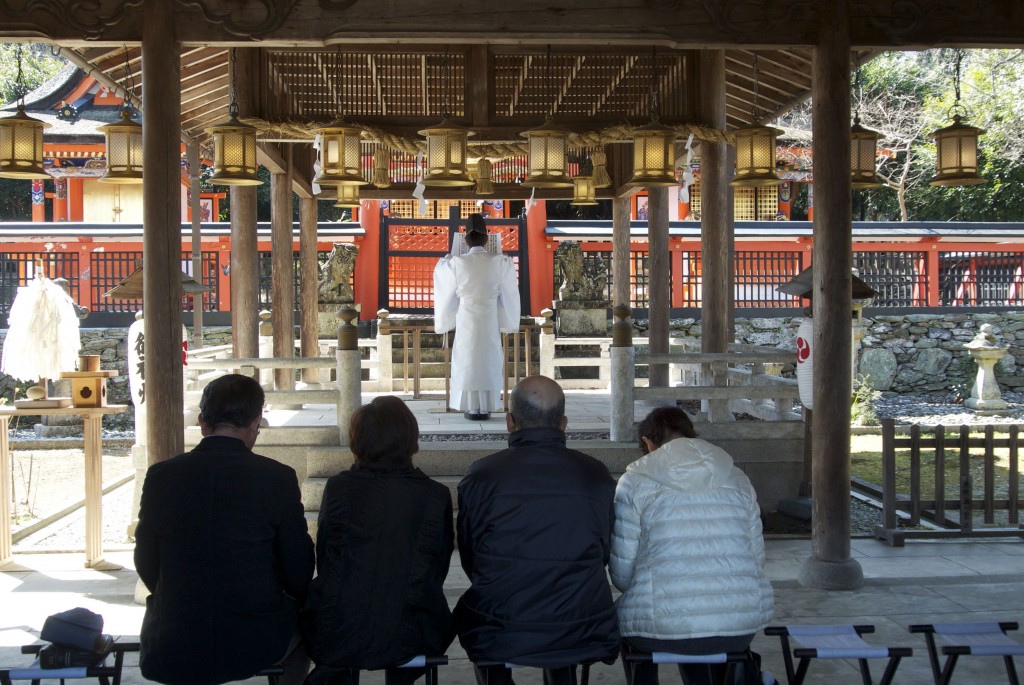
Shinto rite at Niukanshofu Jinja, guardian shrine of Koyasan
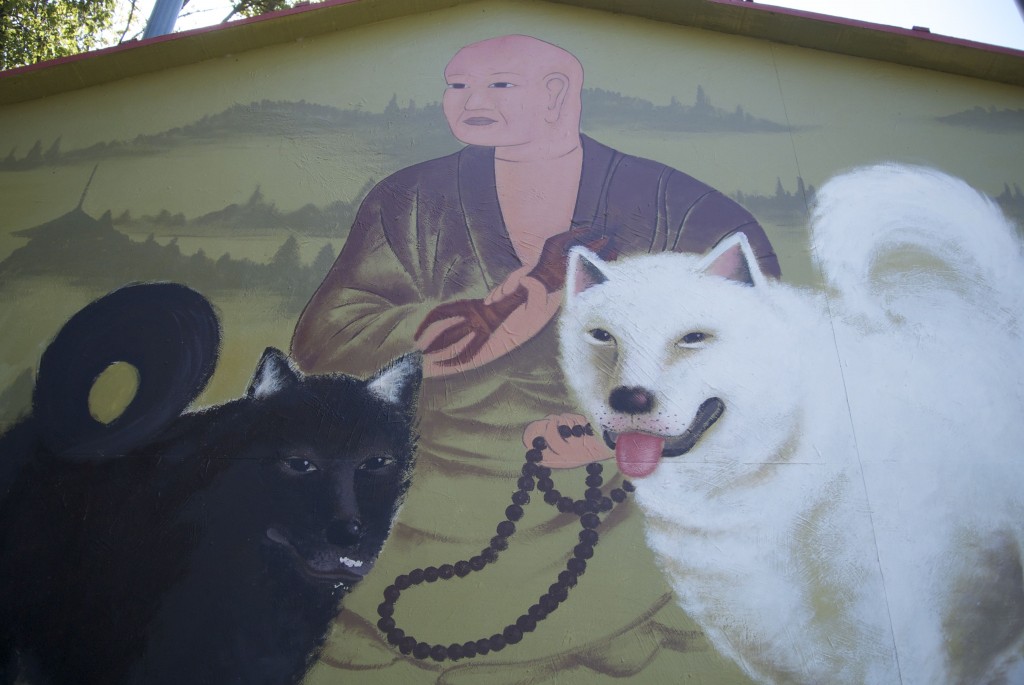
The black and white dog messengers that guided Kukai in Koya's founding myth
Mt Koya, or more affectionately Koyasan, is widely known for its temple complex. But not so many people realise how important a part Shinto shrines play there. Indeed, as a World Heritage site there are two temples, two shrines and a connecting pilgrimage route listed by Unesco. Here, it turns out, are two more World Heritage shrines to add to the list I previously compiled.
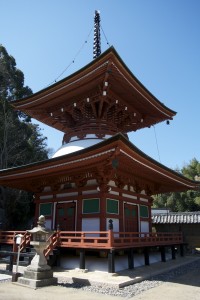
Jison-in's striking three-storey pagoda
Mt Koya, usually known as Koyasan, is a city complex of 117 temples that stand on a mountain plateau 820 meters above sea level. It contains the headquarters of the Shingon sect of esoteric Buddhism, and the location was intended to facilitate training in nature, removed from the secular world. In the past the complex was many times bigger than now, making it one of the world’s great mountain temples. Even today the scale is astounding. Religious practice has been carried out here for 1200 years, and for visitors it’s a rare chance to experience the essence of Japanese spirituality.
The original temple was founded by Kukai, posthumously named Kobo Daishi (774-835). He was not only a monk, but a father figure of Japanese culture who excelled in calligraphy, sculpture, good works and the practical skills needed by the peasantry. As founder of the Shingon sect, his name is everywhere present at Koya and his statues are the focus of devotion.
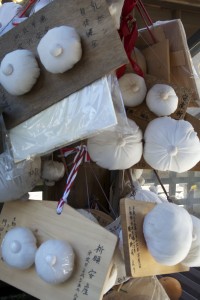
Model breasts at Jison-in
At the foot of the mountain is the first of the World Heritage properties, a temple called Jison-in which acted as administrative base for activities further up the mountain. It was a male-only sacred mount, and according to tradition Kukai’s mother was in residence here when she passed away.
Thereafter the temple became the focus of pilgrimage for women, until the mountain proper was opened to them in 1872. It explains features such as the unexpected models of breasts near the entrance, for the temple caters to female concerns such as pregnancy, easy childbirth and protection from breast cancer.
Next to the temple, up a flight of stairs, is Niukanshofu Jinja, set up by Kukai as a guardian shrine for his project. There used to be Buddhist buildings in the precincts but these were removed in Meiji times, leaving a somewhat forlorn air. Amongst the enshrined kami are those of Mt Koya itself.
According to legend, while Kukai was searching for a suitable spot, he came across a hunter whose two dogs, one black and one white, led him to a hidden valley. Auspiciously, the surrounding eight peaks reminded him of a lotus flower, and it turned out the hunter was son of the Koya goddess, who graciously granted him permission to build his monastery. Kukai’s recognition of the kami means that shrines and torii are everywhere evident on the mountain.
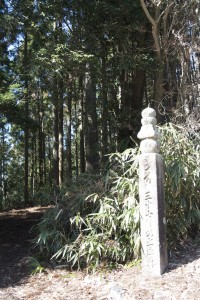
One of the stone markers on the Choishimichi pilgrimage route
The Choishimichi pigrimage route, which extends from Jison-in to the giant entrance gate to Koyasan, passes through the Niukanshofu Shrine at its outset and takes about eight hours in all. There are 180 stone markers (the first is outside Jison-in), at each of which pilgrims stop to pray. The route is about twenty kilometers in length, and it passes nearby the other World Heritage shrine, Niutsuhime Jinja (origin unknown, but before ninth century).
The goddess of Koyasan is also deified Niutsuhime Shrine (literally, Princess Niutsu), and the shrine speaks of a former majesty with a beautifully arched bridge over a koi pond, a large two-storey gate (an Important Cultural Property), and a compound housing a row of four impressive sanctuaries in the kasuga-zukuri style of crossed chigi on the roof together with horizontal katsuogi logs (see photo).
Up at the top of Mt Koya, there are wonders wherever you look, and no shortage of torii and guardian shrines. No other sect of Buddhism is so closely bound with Shinto, for both look for inspiration to the divinity of nature. As a result wherever you roam at Koyasan there are sure to be Shinto elements on display. It’s a striking example of how the animistic sense is deeply rooted in the national consciousness.
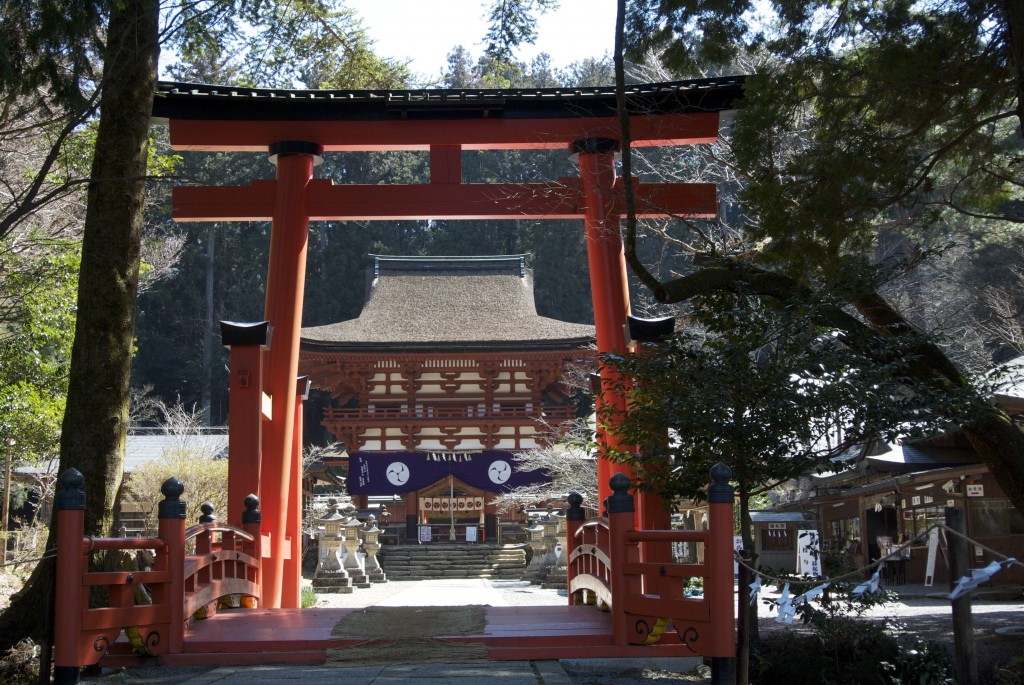
Entrance torii and Buddhist-style gateway to Niutsuhime Jinja
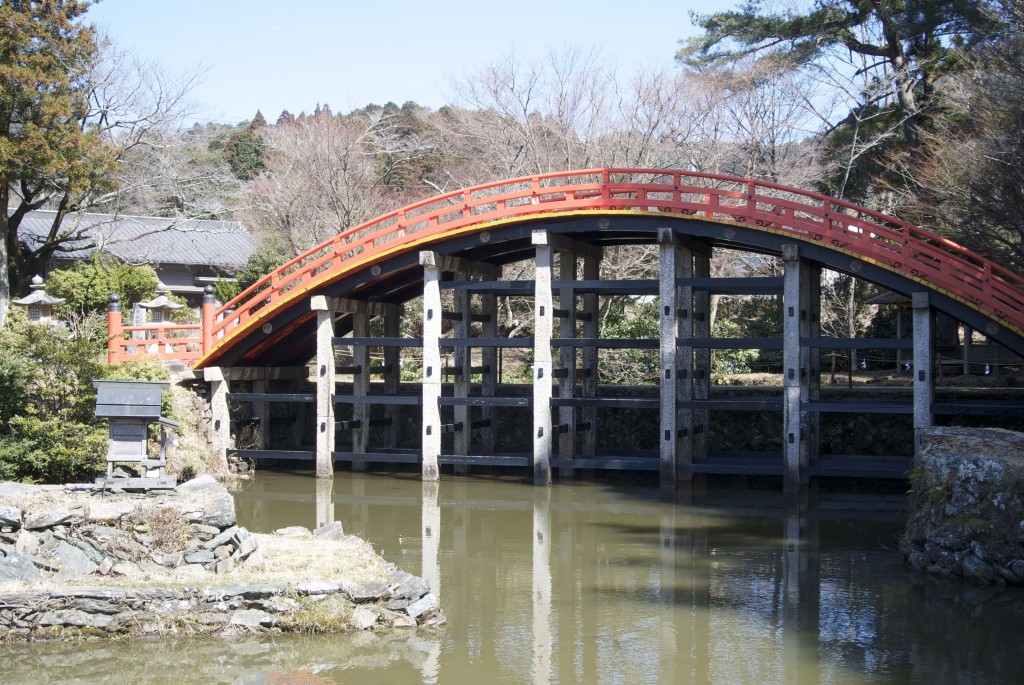
The graceful arched bridge leading to Niutsuhime Jinja, now needing a lick of paint but suggestive of a fermer glory
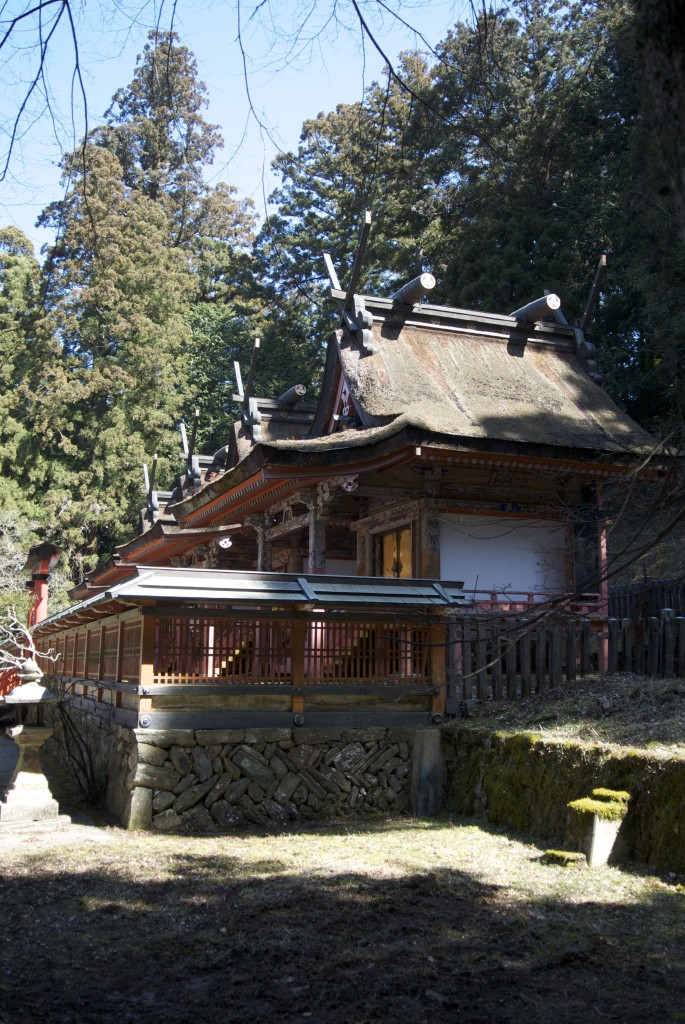
The sanctuaries at Niutsuhime Jinja, with crossed chigi on the roof and horizontal katsuogi logs
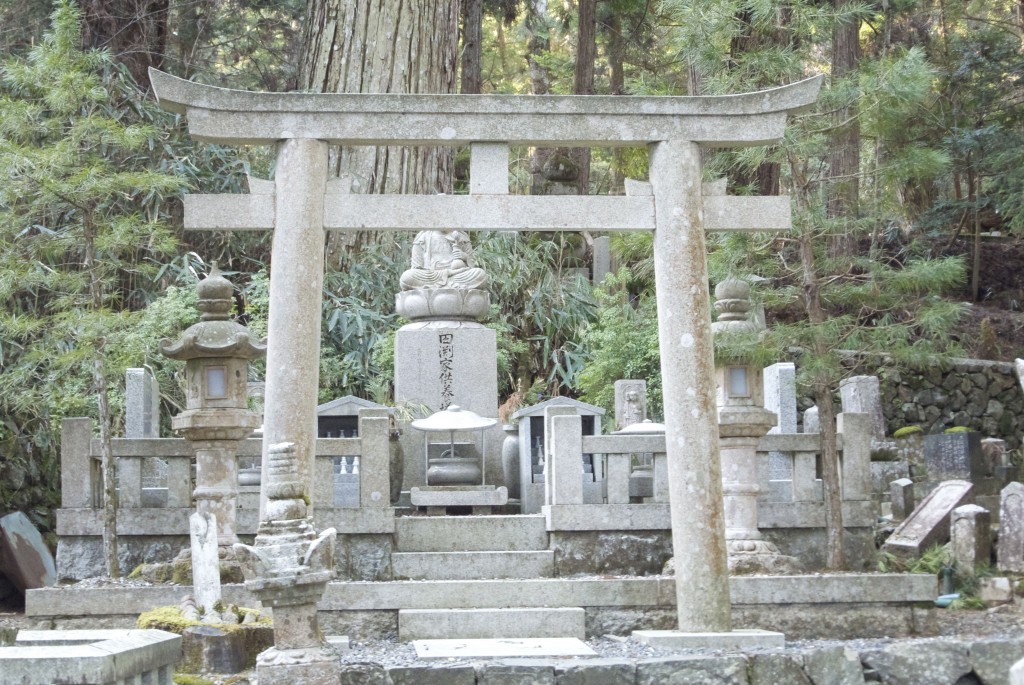
Torii are everywhere at Koya, even in the wonderful Okunoin cemetery
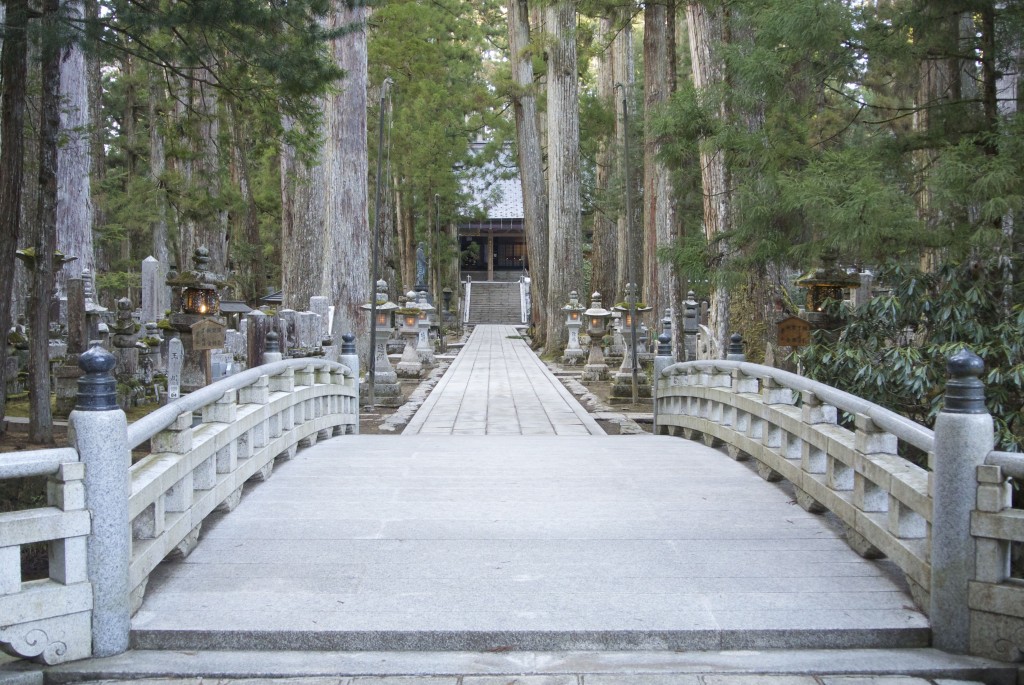
Shrine-like pathway to Kukai's mausoleum, holy of holies at the Okunoin cemetery.
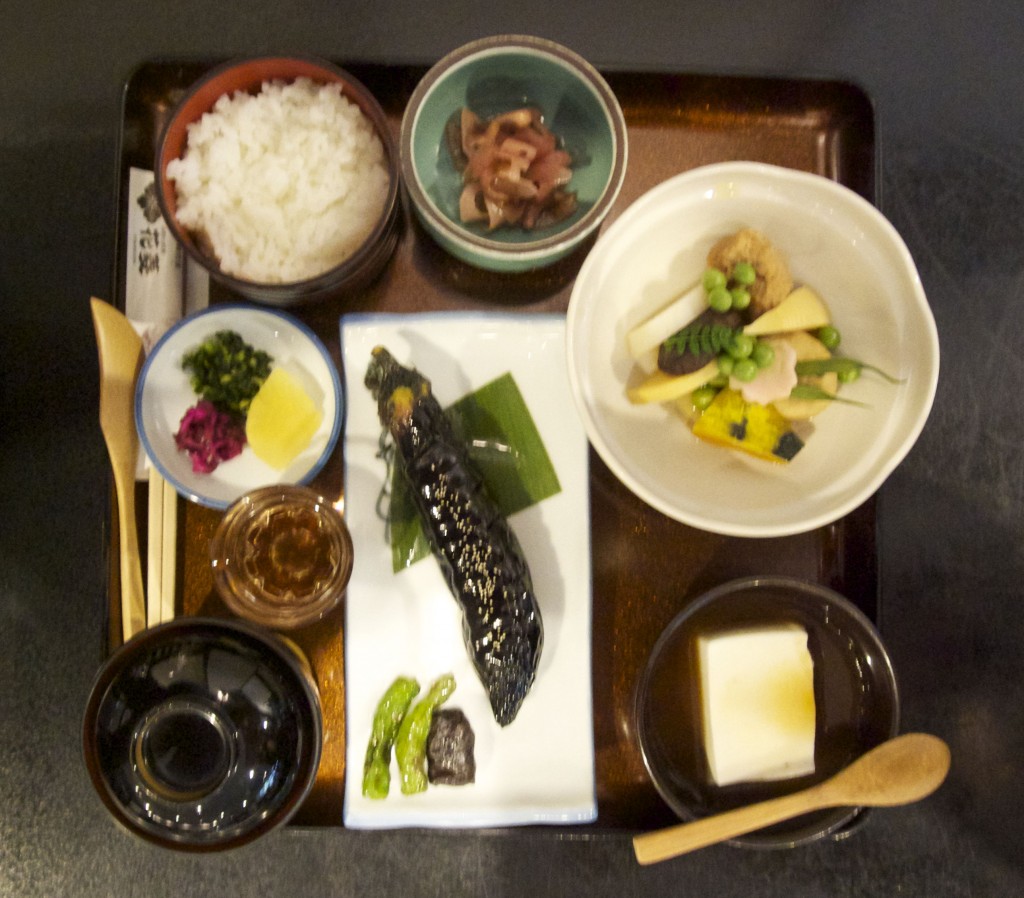
No visit to Koyasan is complete without a meal of the seasonal, delicious and vegetarian 'shojin ryori' eaten by the monks. Koya tofu is particularly well-known.
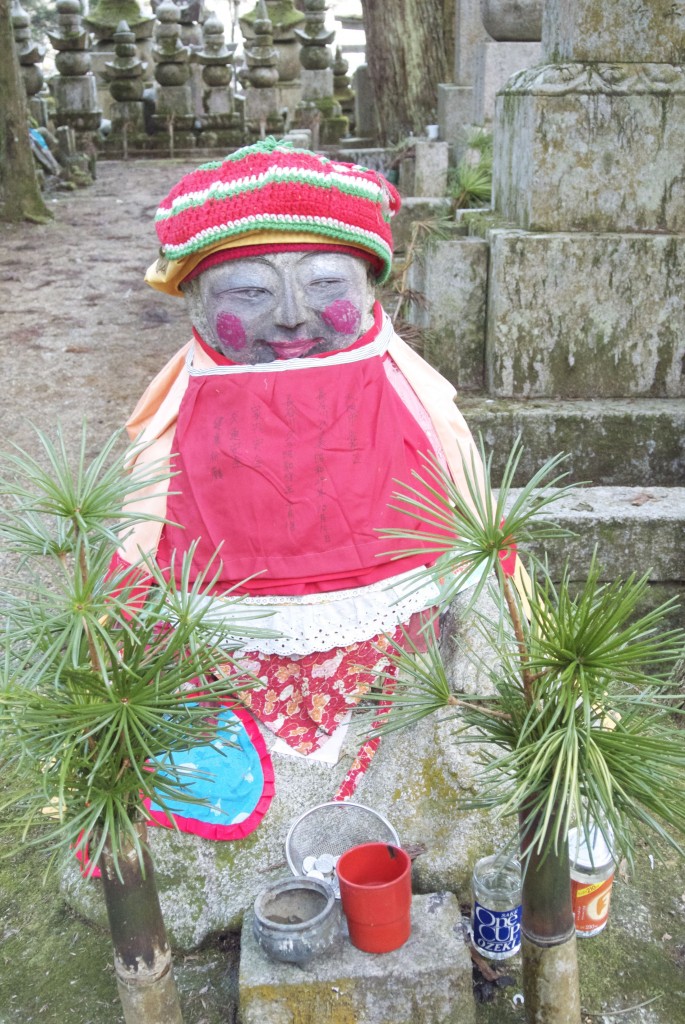
Jizo with bib and make-up: one of the reasons everyone loves Okunioin

Leave a Reply